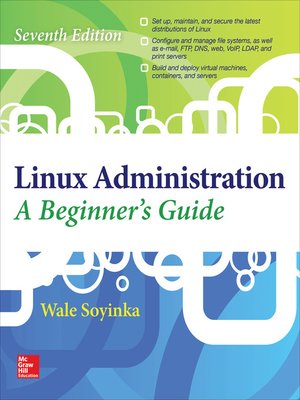
Sign up to save your library
With an OverDrive account, you can save your favorite libraries for at-a-glance information about availability. Find out more about OverDrive accounts.
Find this title in Libby, the library reading app by OverDrive.



Search for a digital library with this title
Title found at these libraries:
| Library Name | Distance |
|---|---|
| Loading... |
Effectively set up and manage any version of Linux on individual servers or entire networks using this practical resource. Fully updated to cover the latest tools and techniques, Linux Administration: A Beginner's Guide, Seventh Edition features clear explanations, step-by-step instructions, and real-world examples. Find out how to configure hardware and software, work from the GUI or command line, maintain Internet and network services, and secure your data. Performance tuning, virtualization, containers, software management, and backup solutions are covered in detail.







